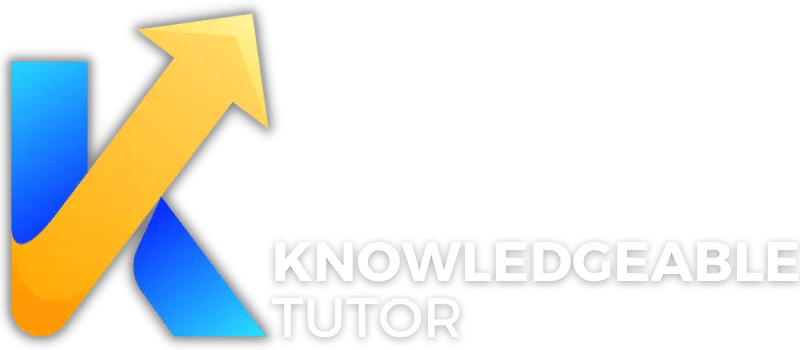Creating Effective Lesson Plans for Online Tutoring

Fanie Naude
CEO & Founder of Knowledgeable Tutor, Buznet Direct, YMC & Naude Consulting

Fanie Naude
CEO & Founder of Knowledgeable Tutor, Buznet Direct, YMC & Naude Consulting

The article delves into the multifaceted world of e-learning, focusing on strategies to foster community, enhance problem-solving skills, and implement collaborative learning. It explores various aspects of online tutoring, including digital marketing, interactive activities, lesson planning, legal and ethical considerations, assessment strategies, professional development, and innovative engagement techniques. The content is rich with real-life examples and offers practical insights for educators and tutors navigating the digital education landscape.
Summary of Key Points
- Collaborative Learning: Emphasizes group projects and peer review to foster a sense of community.
- Digital Marketing: Highlights content marketing strategies, including blogs and articles, to enhance online tutoring business.
- Interactive Activities: Discusses the use of quizzes, polls, and virtual field trips to create engaging learning experiences.
- Lesson Planning: Focuses on aligning with objectives and leveraging technology for effective online education.
- Legal and Ethical Considerations: Stresses the importance of privacy, security, and intellectual property rights in online tutoring.
- Assessment Strategies: Explores formative and summative assessments to evaluate student progress.
- Professional Development: Encourages self-assessment, reflection, and continuous learning for tutors.
- Innovative Engagement Techniques: Examines personalized learning, flexible scheduling, and global reach in online tutoring.
The article serves as a comprehensive guide for tutors and educators, providing actionable insights and best practices to excel in the ever-evolving field of online education. It resonates with the famous quote by W.B. Yeats: "Education is not the filling of a pail, but the lighting of a fire."

Understanding the Online Tutoring Landscape
The rise of online tutoring is a phenomenon that has redefined the educational landscape in recent years. It has opened doors to global learning opportunities, transcending geographical boundaries, and offering a flexible and personalized learning experience. However, this new frontier also presents unique challenges and opportunities that must be navigated with care and expertise.
The Rise of Online Tutoring
Online tutoring has emerged as a powerful tool in the arsenal of modern education. It offers:
- Global Reach: Tutors can connect with students from different parts of the world, breaking down geographical barriers.
- Personalized Learning: Tailored lesson plans cater to individual learning needs, enhancing understanding and retention.
- Flexible Scheduling: Learning can happen at a pace and time that suits both the tutor and the student.
- Cost-Effective: Eliminates commuting costs and allows access to quality education at affordable rates.
- Technological Advancements: Utilizes cutting-edge tools and platforms to create engaging and interactive learning experiences.
Real-life example: VIPKid, an online English tutoring platform, connects teachers from North America with students in China, offering personalized and engaging lessons.
Challenges and Opportunities
The online tutoring landscape is not without its challenges, but these also present opportunities for growth and innovation:
Challenges:
- Technical Issues: Dependence on stable internet connections and compatible devices.
- Engagement: Keeping students engaged in a virtual environment.
- Quality Assurance: Ensuring the quality of education and adherence to standards.
- Security and Privacy: Protecting personal information and maintaining a safe online environment.
Opportunities:
- Innovation: Leveraging technology to create immersive learning experiences.
- Collaboration: Building global communities of learners and educators.
- Accessibility: Making quality education accessible to underserved populations.
- Professional Development: Continuous learning and growth for tutors through online resources and communities.
Real-life example: Khan Academy, a non-profit educational organization, offers free online courses to anyone, anywhere, addressing the challenge of accessibility.
Technology and Tools
Embracing the right technology and tools is crucial for success in online tutoring:
- Learning Management Systems (LMS): Platforms like Moodle and Blackboard facilitate course creation, management, and tracking.
- Interactive Whiteboards: Tools like Ziteboard enable real-time collaboration and interaction.
- Video Conferencing: Platforms like Zoom and Skype allow face-to-face communication.
- Content Creation Tools: Software like Articulate Storyline helps in creating engaging multimedia content.
- Assessment Tools: Platforms like Quizlet enable the creation of quizzes and assessments to gauge student understanding.
"The beautiful thing about learning is that no one can take it away from you." – B.B. King

Setting the Foundation: Goals and Objectives
Creating effective lesson plans for online tutoring begins with setting clear and measurable goals and objectives. This foundational step ensures alignment with curriculum standards and provides a roadmap for both tutors and students.
Ultimate Goals and Clear Objectives
- Ultimate Goals: These are the overarching educational outcomes that the lesson aims to achieve. They are broad and long-term.
- Clear Objectives: These are specific, measurable, achievable, relevant, and time-bound (SMART) targets that lead to the attainment of the ultimate goals.
Example:
- Ultimate Goal: Enhance students' understanding of environmental science.
- Clear Objectives:
- Explain the concept of the greenhouse effect.
- Analyze the impact of deforestation on the environment.
- Conduct a virtual experiment on soil erosion.
Alignment with Curriculum Standards
- Understanding Standards: Familiarize yourself with national or regional curriculum standards relevant to the subject matter.
- Mapping Objectives: Align lesson objectives with the appropriate standards to ensure compliance and relevance.
Example: Aligning a mathematics lesson with the Common Core State Standards in the USA ensures that the content is in line with nationally recognized educational goals.
Measurable Outcomes
- Assessment Criteria: Define how success will be measured, including quizzes, assignments, projects, or participation.
- Feedback Mechanism: Establish a process for providing constructive feedback to students on their performance.
Example: Using platforms like Google Classroom to assign and grade assignments, and providing personalized feedback to guide future learning.
"Education is the most powerful weapon which you can use to change the world." – Nelson Mandela
Understanding the online tutoring landscape and setting the foundation through clear goals and objectives are pivotal steps in creating effective lesson plans. Embracing the opportunities while navigating the challenges, and aligning lessons with well-defined goals, sets the stage for a successful online tutoring experience. The integration of technology, coupled with a strategic approach, ensures that online tutoring is not just a replication of traditional teaching but a transformative educational experience.

Designing the Lesson Plan
The art of designing a lesson plan for online tutoring is akin to crafting a masterpiece. It's a meticulous process that requires careful consideration, creativity, and a touch of innovation. In the words of Benjamin Franklin, "By failing to prepare, you are preparing to fail." A well-designed lesson plan is the backbone of a successful online tutoring session. Let's delve into the essential components of designing an effective lesson plan for online tutoring.
Step-by-Step Guide
- Identify the Learning Objectives: Clearly define what the students should know or be able to do by the end of the lesson. Align these objectives with the curriculum standards.
- Choose the Right Content: Select the content that fits the learning objectives. Ensure that it's engaging and relevant to the students' needs.
- Incorporate Multimedia Elements: Utilize videos, images, and interactive tools to make the lesson more engaging. Tools like Kahoot can add an interactive quiz element.
- Plan the Lesson Structure: Break down the lesson into manageable sections. Include an introduction, main content, activities, and a conclusion.
- Design Interactive Activities: Plan activities that encourage student participation and interaction.
- Prepare Assessment Methods: Decide how you will assess the students' understanding during and after the lesson.
- Include Flexibility: Be prepared to adapt the lesson plan based on student responses and needs.
Templates and Examples
Utilizing templates can save time and ensure consistency across lessons. Here are some examples:
- Basic Lesson Plan Template: Includes sections for objectives, materials, procedures, assessments, and reflections.
- Interactive Lesson Plan Template: Designed for lessons that heavily incorporate multimedia and interactive elements.
- Special Needs Lesson Plan Template: Tailored for students with special needs, focusing on individualized learning strategies.
You can find more templates and examples at Knowledgeable Tutor's Guide to Creating Effective Lesson Plans for Online Tutoring.
Inclusion of Multimedia Elements
In the digital age, the inclusion of multimedia elements is not just an option; it's a necessity. Here's how to effectively incorporate multimedia:
- Videos: Use videos to explain complex concepts. Platforms like YouTube offer a plethora of educational content.
- Images and Infographics: Visual aids can enhance understanding and retention.
- Interactive Tools: Tools like Padlet allow students to collaborate and share ideas in real-time.
- Virtual Labs: For subjects like science, virtual labs can provide hands-on experience without the need for physical equipment.
Real-Life Example: Khan Academy
Khan Academy is a prime example of how multimedia elements can transform education. Their platform offers video lessons, interactive quizzes, and personalized dashboards, setting a benchmark for online education.
Designing a lesson plan for online tutoring is a creative and strategic process. It's about understanding the learners, aligning with objectives, and leveraging technology to create an engaging and effective learning experience. As Leonardo da Vinci once said, "Learning is the only thing the mind never exhausts, never fears, and never regrets." By investing in well-crafted lesson plans, tutors can provide an enriching learning experience that resonates with students and fosters lifelong learning. Whether you are teaching different subjects or handling technical difficulties during sessions, a well-designed lesson plan is your roadmap to success.

Engagement Strategies
Engagement is the heartbeat of online tutoring. It's the spark that ignites curiosity, fuels interaction, and sustains learning momentum. As the renowned educator and philosopher John Dewey once said, "We do not learn from experience... we learn from reflecting on experience." Engagement strategies are the tools that facilitate this reflection, interaction, and deep learning. Let's explore the innovative ways to keep students engaged in online tutoring.
Interactive Activities
Interactive activities are the building blocks of engagement. They transform passive learning into an active experience. Here's how to create interactive activities:
- Quizzes and Polls: Use platforms like Mentimeter to create real-time quizzes and polls.
- Discussion Forums: Encourage students to participate in online discussions. Platforms like Edmodo facilitate classroom-like discussions.
- Collaborative Projects: Assign projects that require collaboration. Tools like Google Workspace enable seamless collaboration.
- Virtual Field Trips: Take students on virtual field trips using platforms like Google Earth.
Real-Life Example: Duolingo
Duolingo is a language-learning platform that uses interactive activities like quizzes, games, and challenges to keep learners engaged.
Collaborative Learning
Collaborative learning fosters a sense of community and enhances problem-solving skills. Here's how to implement collaborative learning:
- Group Projects: Divide students into groups and assign projects that require collaboration.
- Peer Review: Encourage students to review and provide feedback on each other's work.
- Online Workshops: Conduct workshops where students can work together on tasks.
Real-Life Example: Slack Education Community
Slack has education communities where educators and students collaborate, share resources, and engage in discussions.
Gamification in Education
Gamification is the art of applying game-like elements to educational content. It's a powerful tool to make learning fun and engaging. Here's how to gamify your lessons:
- Badges and Rewards: Award badges for achievements and milestones.
- Leaderboards: Create leaderboards to foster healthy competition.
- Challenges and Quests: Design challenges that students must complete to progress.
Real-Life Example: Classcraft
Classcraft is an educational platform that turns learning into a game, with characters, quests, and rewards.
Table: Engagement Strategies and Tools
| Strategy | Tools and Platforms | Purpose |
|---|---|---|
| Interactive Activities | Kahoot, Mentimeter | Quizzes, Polls, Discussions |
| Collaborative Learning | Google Workspace, Slack | Group Projects, Peer Review, Workshops |
| Gamification | Classcraft, Duolingo | Badges, Leaderboards, Challenges |
Engagement strategies are the lifeline of online tutoring. They transform the virtual classroom into a vibrant learning community. Whether it's through interactive activities, collaborative learning, or gamification, these strategies breathe life into online lessons. As tutors, we must be the conductors of this symphony of engagement, orchestrating a learning experience that resonates with students and leaves a lasting impact. For more insights on maintaining student engagement, explore Knowledgeable Tutor's Guide to Maintaining Student Engagement in Online Tutoring. The future of education is bright, and with the right engagement strategies, we can illuminate the path of learning for our students.

Assessment and Feedback
The fifth cornerstone in creating effective lesson plans for online tutoring revolves around the critical components of assessment and feedback. This stage is vital in evaluating the student's understanding, progress, and areas that may need further attention. Here's a comprehensive guide to implementing assessment and feedback strategies in online tutoring.
Formative and Summative Assessments
Formative Assessments
Formative assessments are continuous evaluations that occur during the learning process. They help tutors understand where students are struggling and what they have mastered. Examples include quizzes, discussions, and reflective journals.
- Interactive Quizzes: Tools like Kahoot! allow tutors to create engaging quizzes that provide instant feedback.
- Discussion Forums: Platforms like Slack enable real-time discussions, promoting critical thinking.
- Reflective Journals: Encouraging students to maintain a reflective journal helps in self-assessment and fosters a deeper understanding of the subject.
Summative Assessments
Summative assessments evaluate student learning at the end of an instructional unit. They are often high stakes and include exams, final projects, and standardized tests.
- Online Exams: Platforms like ProctorU ensure integrity in online testing.
- Final Projects: Assigning projects that require the application of learned concepts can be a robust assessment tool.
- Standardized Tests: Preparing students for standardized tests like SAT or GRE can be part of the assessment strategy.
Feedback Mechanisms
Feedback is the cornerstone of effective learning. It helps students understand their strengths and weaknesses and provides guidance for improvement. Here are some strategies:
- Immediate Feedback: Tools like Socrative allow tutors to provide real-time feedback during lessons.
- Personalized Feedback: Tailoring feedback to individual needs enhances its effectiveness. Tools like Turnitin can assist in providing personalized feedback on written assignments.
- Peer Review: Encouraging students to review each other's work fosters a collaborative learning environment.
Continuous Improvement
Continuous improvement is the process of constantly evaluating and updating your teaching methods and materials. Here's how you can achieve it:
- Regular Surveys: Collecting feedback from students through surveys helps in understanding their needs and preferences.
- Analytics and Reporting: Platforms like Google Analytics can provide insights into student engagement and performance.
- Professional Development: Engaging in professional development opportunities ensures that you stay updated with the latest teaching strategies and tools. You can explore more about this in our guide on useful resources for online tutors.
Real-Life Example: The Flipped Classroom
The Flipped Classroom is a teaching model that reverses traditional teaching. Short video lectures are viewed by students at home before the class session, while in-class time is devoted to exercises, projects, or discussions. This model allows for continuous assessment and feedback.
- Formative Assessments: Pre-class quizzes ensure students have understood the video content.
- Summative Assessments: In-class activities and projects assess the application of knowledge.
- Feedback: Immediate feedback during class enhances learning.
Assessment and feedback are integral to the success of online tutoring. They not only gauge student understanding but also guide them towards improvement. By employing a mix of formative and summative assessments, leveraging technology for immediate feedback, and focusing on continuous improvement, tutors can create a dynamic and responsive learning environment. As John Dewey once said, "We do not learn from experience... we learn from reflecting on experience." This reflection is made possible through effective assessment and feedback.

Legal and Ethical Considerations
In the realm of online tutoring, legal and ethical considerations are paramount. These considerations ensure that the educational experience is not only effective but also safe, accessible, and respectful of intellectual property rights. Here's an in-depth exploration of these critical aspects.
Privacy and Security
Online tutoring involves the exchange of personal and academic information. Ensuring the privacy and security of this data is a legal obligation and an ethical responsibility.
Data Privacy
- Compliance with Regulations: Adhering to regulations like GDPR and COPPA is essential. These laws govern how personal information is collected, stored, and used.
- Secure Platforms: Utilizing secure platforms that encrypt data transmission protects against unauthorized access. For example, using Zoom with end-to-end encryption.
- Clear Privacy Policies: Having transparent privacy policies that outline how data is used builds trust. More on this can be found in our guide on creating a safe and comfortable online learning environment.
Cybersecurity
- Secure Connections: Using VPNs and secure Wi-Fi connections prevents data breaches.
- Regular Updates: Keeping software and systems updated ensures that security vulnerabilities are patched.
- Training and Awareness: Educating students about cybersecurity best practices is vital. This includes not sharing passwords and recognizing phishing attempts.
Accessibility Standards
Ensuring that online tutoring is accessible to all students, including those with disabilities, is both a legal requirement and an ethical commitment.
- Compliance with ADA: Adhering to the Americans with Disabilities Act ensures that online tutoring is accessible to all.
- Use of Assistive Technologies: Tools like screen readers and speech-to-text software make content accessible to students with visual or hearing impairments.
- Universal Design Principles: Designing lessons that are accessible to all, regardless of ability, promotes inclusivity. Our guide on online tutoring for special needs students provides further insights.
Copyright Laws
Respecting intellectual property rights is a legal obligation that also fosters a culture of academic integrity.
- Use of Licensed Materials: Utilizing licensed or royalty-free materials ensures compliance with copyright laws.
- Proper Attribution: Citing sources and giving proper credit prevents plagiarism.
- Educating Students: Teaching students about intellectual property rights fosters a culture of respect and integrity.
Real-Life Example: Khan Academy
Khan Academy, a renowned online educational platform, exemplifies adherence to legal and ethical considerations.
- Privacy and Security: They have robust privacy policies and use encryption to protect user data.
- Accessibility: The platform is designed to be accessible, with features like closed captioning for videos.
- Copyright: They use open-source materials and provide proper attribution for third-party content.
Legal and ethical considerations in online tutoring are not mere compliance checkboxes but the foundation of a responsible and inclusive educational environment. By safeguarding privacy, ensuring accessibility, and respecting intellectual property rights, tutors can create a learning space that is not only effective but also just and equitable. As Dr. Martin Luther King Jr. eloquently stated, "The time is always right to do what is right." These legal and ethical considerations guide tutors in doing what is right in the digital age of education.

Marketing Your Online Tutoring Services
In the digital age, where online tutoring is flourishing, marketing your services effectively is not just an option but a necessity. It's about building a brand, connecting with the right audience, and showcasing your unique value proposition. Here's a comprehensive guide to marketing your online tutoring services, tailored to the needs and aspirations of modern tutors.
Building an Online Presence
Creating a robust online presence is the cornerstone of marketing in the digital world. It's about being where your potential students are and engaging them with your unique offerings.
Website Development
- Professional Website: A professional website acts as your virtual office. It should include your qualifications, services, testimonials, and contact information. More on this can be found in our guide on building your online tutoring business.
- SEO Optimization: Implementing SEO strategies ensures that your website ranks higher in search engine results. This includes using relevant keywords, optimizing images, and having quality backlinks.
- Mobile-Friendly Design: With the majority of users accessing websites on mobile devices, a mobile-friendly design enhances user experience.
Social Media Engagement
- Platform Selection: Choose platforms that align with your target audience. For tutors, platforms like LinkedIn, Facebook, and Instagram can be effective.
- Content Strategy: Share valuable content that resonates with your audience. This includes educational tips, success stories, and interactive posts.
- Community Engagement: Engaging with your community by responding to comments, sharing relevant content, and participating in discussions builds trust. Learn more about using social media for your online tutoring business.
Effective Digital Marketing Strategies
Digital marketing is a dynamic field that requires strategic planning and execution. Here's how you can leverage digital marketing to enhance your online tutoring business.
Content Marketing
- Blogs and Articles: Writing informative blogs and articles positions you as an expert in your field. Topics could include effective time management strategies for online tutors or handling difficult tutoring sessions.
- Video Tutorials: Creating video tutorials showcases your teaching style and helps students understand complex concepts.
- Free Resources: Offering free resources like eBooks or webinars attracts potential students. Our useful resources for online tutors can be a starting point.
Paid Advertising
- Google Ads: Running targeted Google Ads reaches potential students actively looking for tutoring services.
- Social Media Advertising: Paid ads on platforms like Facebook allow precise targeting based on demographics, interests, and behavior.
Email Marketing
- Newsletter Subscription: Offering a newsletter subscription keeps your audience engaged with regular updates, offers, and educational content.
- Personalized Communication: Sending personalized emails for special occasions or achievements fosters a deeper connection.
Case Studies and Success Stories
Showcasing real-life success stories and case studies adds credibility to your services.
- Student Testimonials: Sharing testimonials from satisfied students builds trust. Here's how to ask for reviews and testimonials from students.
- Before-and-After Analysis: Demonstrating the improvement in students' grades or understanding through a before-and-after analysis highlights your effectiveness.
- Collaborations with Educational Institutions: If you've collaborated with schools or educational institutions, showcasing these partnerships adds credibility.
Marketing your online tutoring services is a multifaceted endeavor that requires strategic planning, creativity, and continuous effort. It's about building a brand that resonates with your target audience and offering value that sets you apart. As Philip Kotler, the father of modern marketing, once said, "Marketing is not the art of finding clever ways to dispose of what you make. It is the art of creating genuine customer value." By embracing these marketing strategies, tutors can create genuine value in the online education landscape, reaching more students and making a meaningful impact.

Advanced Techniques and Innovations
The realm of online tutoring is not stagnant; it's a dynamic field that continually evolves with technological advancements and innovative approaches. In this section, we will explore the cutting-edge techniques that are revolutionizing the way education is delivered and experienced. These advancements are not just futuristic concepts; they are practical tools that tutors can leverage to enhance their teaching methods.
Artificial Intelligence in Education
Artificial Intelligence (AI) is no longer confined to the realms of science fiction. It has permeated various industries, including education. Here's how AI is transforming online tutoring:
- Personalized Learning Paths: AI algorithms can analyze a student's performance and learning style to create customized lesson plans. This ensures that the content is tailored to the individual's needs, enhancing understanding and retention.
- Automated Grading and Feedback: AI can provide instant feedback and grading, allowing tutors to focus more on teaching and less on administrative tasks.
- Predictive Analysis: By analyzing data, AI can predict potential learning challenges and allow tutors to intervene before problems escalate.
- Enhanced Engagement: AI-powered chatbots and virtual assistants can engage students in interactive learning experiences.
For a deeper dive into AI's role in education, explore our guide on using AI for effective online tutoring.
Virtual Reality and Augmented Reality
Virtual Reality (VR) and Augmented Reality (AR) are not just for gamers; they are powerful tools for education. Here's how they can be utilized in online tutoring:
- Immersive Learning Environments: VR can create realistic simulations, allowing students to explore historical sites, dissect virtual frogs, or even walk on the surface of Mars.
- Enhanced Visualization: AR can overlay digital information onto the real world, aiding in the understanding of complex subjects like anatomy or engineering.
- Collaborative Virtual Classrooms: VR enables students and tutors to interact in a shared virtual space, fostering collaboration and engagement.
Learn more about how to integrate VR and AR into your online tutoring sessions.
Global Collaboration and Cultural Exchange
Online tutoring breaks down geographical barriers, allowing for global collaboration and cultural exchange. Here's how this can be leveraged:
- Cross-Cultural Learning Experiences: Tutors can connect students from different cultures, fostering empathy, understanding, and global awareness.
- Collaborative Projects: Students can work on joint projects with peers from around the world, enhancing their collaborative skills and exposing them to diverse perspectives.
- Language Exchange: Language tutors can facilitate authentic conversations between native speakers and learners, providing real-world language practice.
Explore strategies for building a personal brand as an online tutor to reach a global audience.
Real-Life Examples and Case Studies
- Duolingo: This language-learning platform utilizes AI to create personalized learning paths, adapting to each user's progress and learning style.
- Google Expeditions: This tool offers VR field trips, allowing students to explore far-off places without leaving their classrooms.
- PenPal Schools: This platform connects students from over 150 countries for collaborative projects and cultural exchange.
The integration of advanced techniques and innovations like AI, VR, AR, and global collaboration is not just a trend; it's a paradigm shift in education. These tools are democratizing access to quality education and enabling tutors to deliver engaging, personalized, and effective learning experiences. As the famous educator Sir Ken Robinson said, "The role of a creative leader is not to have all the ideas; it's to create a culture where everyone can have ideas and feel that they're valued." By embracing these innovations, tutors can foster a culture of creativity, curiosity, and continuous learning.

Resources and Support
Online Communities and Forums
In the vast ocean of online tutoring, it's essential to have a support system and access to resources that can guide you through the waves. Online communities and forums are the lighthouses for tutors navigating the digital seas.
Online Communities: These are platforms where tutors can connect, share experiences, and seek advice. They foster collaboration and provide a sense of belonging. For example, joining groups on LinkedIn that focus on online education can be a valuable resource.
Forums: Specialized forums for educators offer a platform to discuss specific challenges, share resources, and learn from experts. Websites like EdSurge provide insights into the latest trends and tools in online education.
Social Media Groups: Platforms like Facebook and Twitter host numerous groups dedicated to online tutoring. Joining these groups can provide access to a wide network of like-minded professionals.
Professional Development Opportunities: Continuous learning is key to staying ahead in the online tutoring field. Platforms like Coursera offer courses specifically tailored for online educators.
Tools and Platforms for Online Tutoring: Selecting the right tools is crucial for delivering effective lessons. Explore this guide to understand different online tutoring platforms.
"The only thing that you absolutely have to know, is the location of the library." - Albert Einstein
Professional Development Opportunities
Professional development is not a one-time event but a continuous journey. Here's how you can keep growing:
Workshops and Seminars: Regularly attending workshops and seminars keeps you updated with the latest teaching methodologies and technologies.
Online Courses: Platforms like Udemy offer courses specifically designed for online tutors, helping them enhance their skills.
Certifications: Earning certifications from recognized institutions adds credibility to your profile and ensures that you meet industry standards.
Conferences: Participating in educational conferences allows you to network with other professionals and gain insights from industry leaders.
Peer Review and Collaboration: Engaging with fellow tutors for peer review and collaboration fosters a culture of continuous improvement.
Mentorship: Having a mentor or being a mentor can be a powerful way to grow professionally. It provides personalized guidance and support.
Self-Assessment and Reflection: Regular self-assessment and reflection on your teaching practices help in identifying areas for improvement.
"Education is not the filling of a pail, but the lighting of a fire." - W.B. Yeats

Conclusion
Recap and Reflection
The journey of creating effective lesson plans for online tutoring is akin to crafting a masterpiece. It requires understanding, planning, designing, engaging, assessing, adhering to legalities, marketing, innovating, and continuous learning. Reflecting on each step ensures that the process is not just about imparting knowledge but creating an enriching learning experience.
Future Trends and Opportunities
The future of online tutoring is bright and filled with opportunities. Here are some trends to watch:
Personalized Learning: AI-driven personalized learning paths are becoming more prevalent, tailoring education to individual student needs.
Global Collaboration: The rise of virtual exchange programs and global classrooms fosters cultural exchange and global awareness.
Immersive Technologies: Virtual Reality (VR) and Augmented Reality (AR) are set to revolutionize the way education is delivered, creating immersive learning experiences.
Sustainability in Education: The focus on sustainable practices in education is growing, with an emphasis on digital resources and eco-friendly methods.
Mental Health Focus: The importance of mental health in education is gaining recognition, with more resources being dedicated to supporting both students and tutors.
Blockchain in Education: Secure and transparent credentialing through blockchain technology is an emerging trend.
Growth of Hybrid Learning: A blend of online and in-person learning, hybrid learning is gaining traction, offering the best of both worlds.
Explore the future of online tutoring trends to stay ahead of the curve.
Inspiring Quotes and Thought Leaders
Nelson Mandela: "Education is the most powerful weapon which you can use to change the world."
Malala Yousafzai: "One child, one teacher, one book, one pen can change the world."
Steve Jobs: "The people who are crazy enough to think they can change the world are the ones who do."
Sir Ken Robinson: "The role of a creative leader is not to have all the ideas; it's to create a culture where everyone can have ideas and feel that they're valued."
The conclusion of this guide is not an end but a beginning. It's a call to action for all tutors to embrace the digital age, innovate, collaborate, and contribute to a global learning community. The canvas of online tutoring is vast, and you are the artist. Paint it with passion, precision, and purpose.

